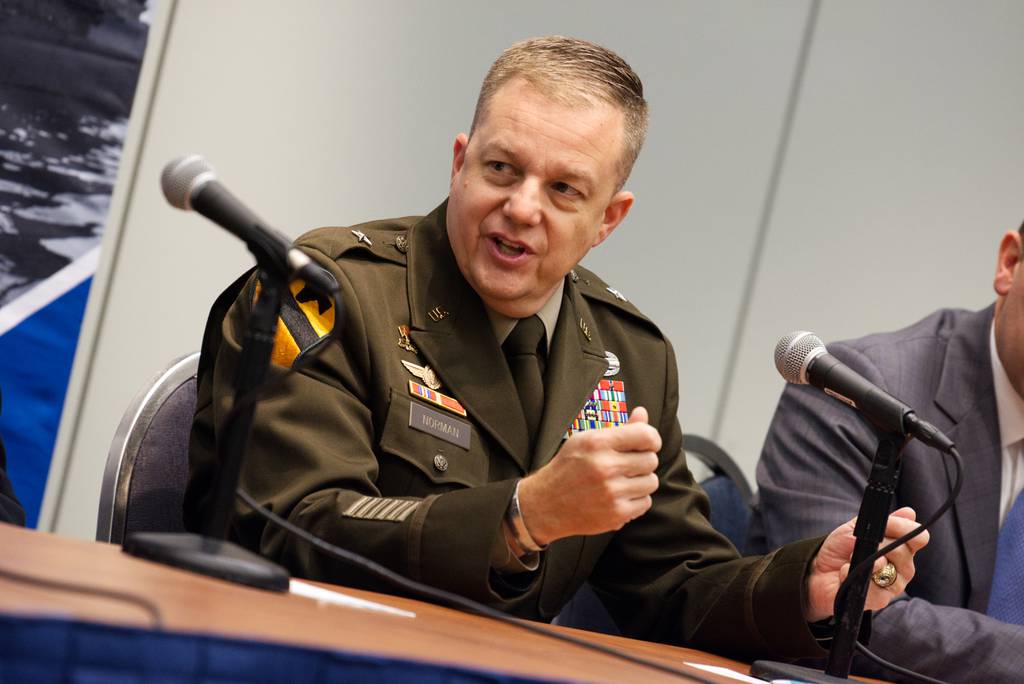WASHINGTON — Molding pixels virtually before bending metal in the real world will pay dividends when it comes to constructing future military gear and vehicles, according to U.S. Army officials.
Such “digital engineering” is already playing a role in the development of the Optionally Manned Fighting Vehicle, or OMFV, which will replace the Bradley infantry fighting vehicle, according to Brig. Gen. Geoffrey Norman, with the Next Generation Combat Vehicles Cross-Functional Team.
“Digital engineering enables us to leverage soldier touch points early and often, frequently and cheaply, in ways that really aren’t possible or haven’t been possible previously with physical prototyping,” Norman said Oct. 11 at a Defense News event on the sidelines of the Association of the U.S. Army annual convention.
“We’re able to come up with, I believe, more elegant and thoughtful designs early on using digital engineering than we would be able to otherwise,” he added. “I think, in the long term, that’s going to make our systems more simple, more rugged, and more reliable.”
Digital engineering is defined as the use of data and virtual modeling across disciplines to develop projects and support lifecycle activities from concept to disposal.
RELATED

The Army this summer published a request for proposals to design and build prototypes of the OMFV. Bids are due at the beginning of November, Defense News reported. The service tapped five companies for preliminary designs: Oshkosh Defense, BAE Systems, General Dynamics Land Systems, American Rheinmetall Vehicles and Point Blank Enterprises.
Maj. Gen. Glenn Dean, the program executive officer for ground combat systems, at the same event said spending “more time digitally and less time physically means you’re much more likely to have the first physical instantiation correct,” which translates to fewer shakeups down the road.
“I think, theoretically, we should see compression in elements of the acquisition lifecycle,” he said.
Dean earlier this year told Defense News he and his colleagues were “heavily focused on this use of model-based systems engineering, digital engineering.”
Colin Demarest was a reporter at C4ISRNET, where he covered military networks, cyber and IT. Colin had previously covered the Department of Energy and its National Nuclear Security Administration — namely Cold War cleanup and nuclear weapons development — for a daily newspaper in South Carolina. Colin is also an award-winning photographer.








